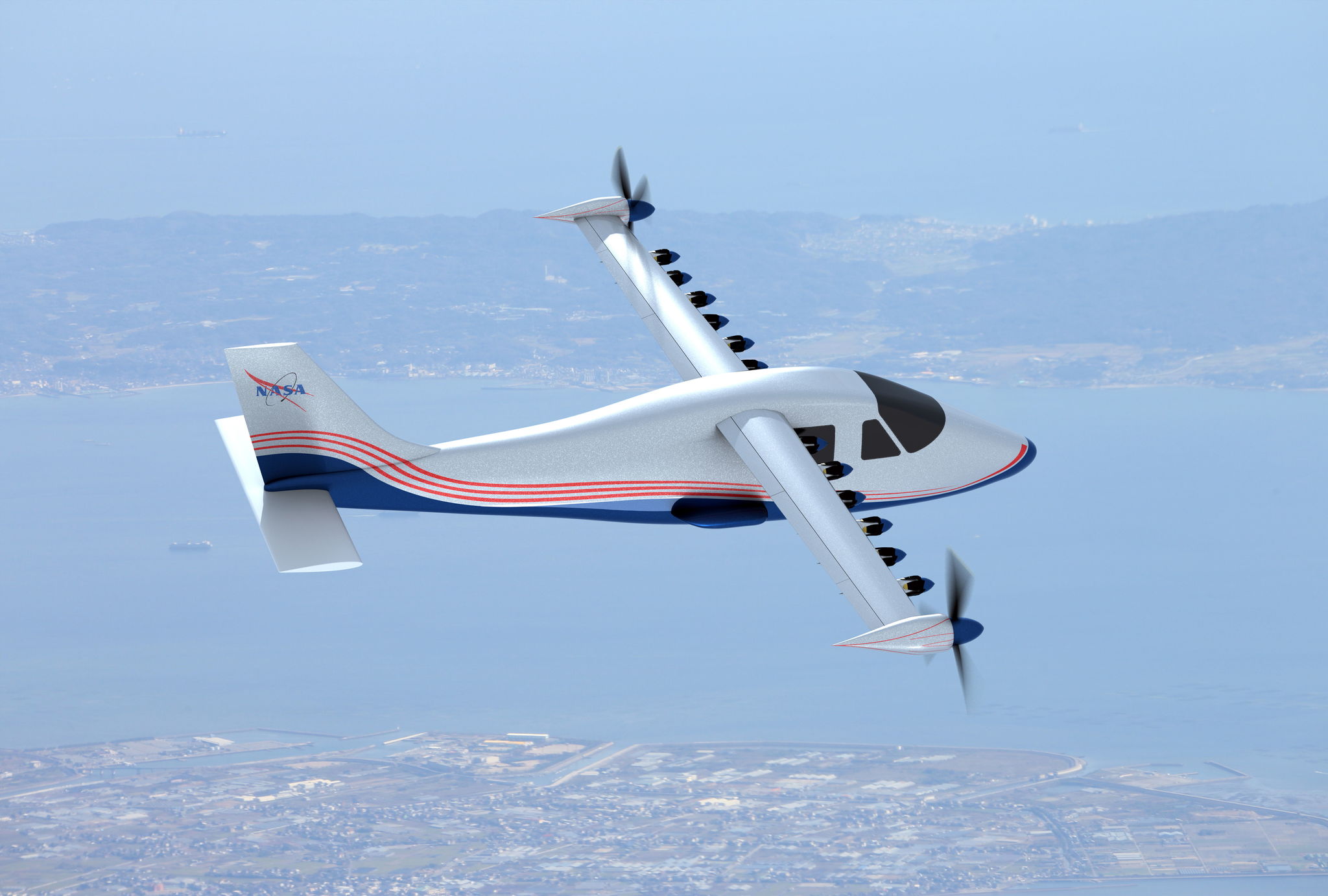NASA is developing an electric plane to accelerate the introduction of zero-emission aircraft that use less energy and cruise at higher speeds than the aircraft of today. If successful, the plane could become a significant first step toward a new era of more efficient and environmentally friendly air travel.
The electric plane, which NASA is calling the X-57, will seat only a pilot. NASA is also planning five larger planes capable of carrying far more passengers and cargo.
The plane will include 14 motors that power propellers on an unusually thin wing. Typically such a narrow wing would be out of the question, because planes need the lift that a broad wing provides during takeoff and landing. But because NASA has a cluster of propellers lining the wing, more air will be blowing across the wing, providing extra lift.
While all 14 motors would operate during takeoff and landing, only two would be needed once the plane is cruising high in the sky.
The X-57 will have a limited range of about 100 miles and an hour or less of flight time. But the agency is thinking long-term and counting on advances in battery technology to dramatically augment the plane’s power in future years.
“If batteries continue to be on the same rapid increase in energy density that they have been on over the past 10 years or so, one can envision five to 10 years out in the future the battery technology would be such that this particular aircraft could be enabled for a commercial-type aspect,” said Matt Redifer, the chief engineer on the project.
NASA has a four-year timeline for developing the aircraft. Its first step will be to convert a Tecnam P2006T, an Italian twin-engine light aircraft, to a purely electric powered plane.
NASA hopes to show that switching to a distributed electric system relying on 14 motors will be five times as energy efficient as a typical plane.
The development of an electric plane could prove valuable amid concerns about climate change. Commercial aircraft contribute 11 percent of U.S. transportation emissions and 3 percent of all U.S. emissions, according to the Environmental Protection Agency.
Another benefit of an electric airplane would be less noise pollution due to the quieter motors.
This is the first experimental plane NASA has designed itself in a decade. The organization’s history in experimental planes dates to 1947 with the first piloted airplane to break the sound barrier.
NASA is nicknaming the X-57 “Maxwell,” in honor of James Clerk Maxwell, the 19th-century Scottish physicist who is known for his work in electromagnetism.
NASA administrator Charles Bolden formally announced the project Friday at a conference.
Talk to us
> Give us your news tips.
> Send us a letter to the editor.
> More Herald contact information.
























